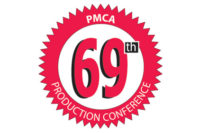Fats and Oils: Cleaner labels, healthier benefits
Work continues on providing confectionery manufacturers with new fats and oils that streamline ingredient labeling, enhance health benefits and promote sustainability.




The question, “What have you done for me lately?” is one that faces research and development teams on a daily basis. When dealing with confectionery ingredients, the focus lately has been on clean labels, health benefits, functionality and, as always, lowering costs.
Within fats and oils, the challenge to deliver health benefits while still retaining taste and functionality continues to be a life journey. Consider Josh Rahn’s observations regarding cocoa, chocolate and confectionery coating trends for 2013.
Writing at the beginning of the year, Cargill’s Product Development Supervisor pointed out that many people were looking to make health a priority in 2013, and that cocoa and chocolate could “work well in this space.”
He pointed out that sales of energy/nutrition bars were projected to jump 14 percent, citing a Packaged Facts report on the category. As Rahn notes, “Nutrition bars are so popular because they are convenient, portable, nonperishable ways to provide energy on the go.”
And here’s where healthy fats and oils come into play, he says.
“A chocolatey flavored coating can help boost protein and may reduce the need for sugar,” Rahn writes. “When using traditional confectionery coatings it becomes a challenge for bar manufacturers to maintain a nutrient content claim of a good or excellent source of protein without also increasing the protein in the bar’s core to levels that can become unpalatable. Adding more milk, casein or whey proteins to the coating can be one solution.
Recognizing that for every enhancement in formulation, there’s a cause and effect, the product development head addresses the issue with a specific solution.
“Adding protein to the coating has been shown to increase viscosity, which usually means adding fat to thin the coating back to its original consistency,” he says. “However, consumers are wary of extra fat and calories. We’ve found that using a larger coating particle size is key, because the particles in the coating bind less fat than finer particles, allowing more free fat to circulate in the coating without increasing overall fat content while maintaining a viscosity that is fit for enrobing or bottoming these types of bars.”
This one example dovetails with the growing demand by consumers, and subsequently manufacturers, of producing confectionery items with a “clean label.” Having addressed the non-hydrogenated and no trans fat challenges, fats and oils suppliers are tackling the demand for lower saturated fats.
At AarhusKarlshamn (AAK) USA, the company’s Customer Innovation team has developed two low saturated fat confectionery coating fats, Cebes LS 60 and Cebes LS 70, says Sarah Teichert, research chemist.
“Our Cebes LS products are non-tempering, non-hydrogenated, zero-trans confectionery coating fats formulated for enrobing applications where saturated fat is a concern,” she explains. “Cebes LS 60 contains only 60% saturated fat and Cebes LS 70 contains 70% saturated fat. Both of these products offer a significant reduction in saturated fat when compared to the typical confectionery coating fat that contains over 90% saturated fat. Cebes LS has an improved nutritional profile, quick set-up time, and does not require any processing changes. Target applications include, but are not limited to, protein and nutritional bars.”
Reducing the levels of saturated fat for confectionery items isn’t as straightforward, however, as removing trans-fat, which had its own challenges.
Confectionery applications can be very demanding,” says Mike Landis, oils and shortenings technical service manager for Cargill. “Saturated fat translates into solid fat, which builds structure and stability. There can be challenges developing the desired texture, crystallization rate and/or shelf life.”
But is all this effort being noticed by consumers? Landis believes it is.
“Consumers are becoming increasingly aware of ingredients and their sources,” he says. “Consequently, customers are asking for sustainably produced fats and oils. Cargill has been a leader in supporting the Roundtable for Sustainable Palm (RSPO) oil along with supporting certified sustainable cocoa products. In addition, Cargill works closely with several conservation groups to ensure best practices are being deployed around the globe.”
As a founder member of RSPO since 2003, AAK has also been heavily involved in sustainability efforts. Today, about 12 percent of global crude oil product is RSPO-certified. Moreover, demand is growing, particularly in Green Palm certificates, says Mark Zavodnyik, sourcing and trading associate for AAK.
As Lovett points out, “ I believe that we are in a state where consumers are starting to become more aware about where their oils are being sourced from, but do not stray away from buying products because of where the oil was sourced from — just yet. There are many advocate groups online that are trying to educate the public where their oil is coming from.”
And those advocacy groups are having their voices heard. Hence, it’s not usual to have customers ask that suppliers remove Tertiary Butylhydroquinone, or TBHQ in a fat and replace it with rosemary extract to order to have a more consumer friendly label, says Landis.
Long used as a stabilizer of unsaturated fats, TBHQ has been targeted by some advocacy groups as being unsafe since it is a form of butane.
Thus, to address that age-old question, “What have you done for me lately,” the answer seems to be everything that consumers and customers want.
Looking for a reprint of this article?
From high-res PDFs to custom plaques, order your copy today!









